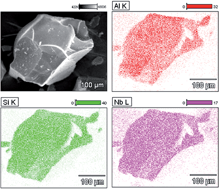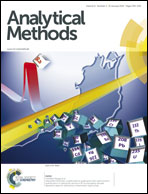On the applicability of SiO2/Al2O3/Nb2O5 and SiO2/Al2O3/TiO2 as a biocompatible platform for chloroperoxidase
Abstract
In the present work, two mixed oxides, namely, SiO2/Al2O3/Nb2O5 and SiO2/Al2O3/TiO2 (designated as SiAlNb and SiAlTi, respectively), obtained using the sol–gel method were used to immobilize chloroperoxidase. Hydrogen peroxide was quantified using potassium hexacyanoferrate(II) as a redox-mediator and amperometric measurements at 0.0 V vs. Ag/AgCl/Cl− (3 M). The SiAlTi biosensor presented higher sensitivity than the SiAlNb biosensor, however, the first one did not present a good response regarding time. The developed biosensor using the SiAlNb mixed oxide provided good signal levels, good linearity, good stability (retaining approximately 70% of its original response after 6 weeks of usage), a low detection limit (3 μM), good sensitivity, a suitable working range (from 4 to 19 μM), fast response and good repeatability. The recovery of the amperometric method for the detection of hydrogen peroxide in synthetic samples was approximately 100 ± 2%, and for Listerine® Whitening Pre-Brush Rinse samples fortified with 1, 2 and 3% (v/v) of hydrogen peroxide, it was 100 ± 3%.

- This article is part of the themed collection: Analytical Sciences in Brazil

 Please wait while we load your content...
Please wait while we load your content...